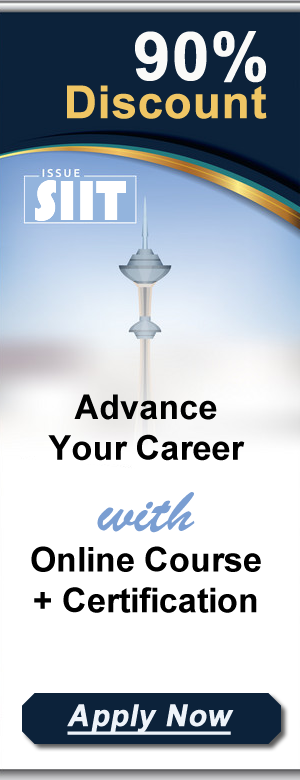
Alaska's Winter Field School: Nurturing Future Heliophysicists
Section 1: The Eclipse Ambassadors Program and its Impact
The NASA Science Activation program's Eclipse Ambassadors Off the Path initiative successfully engaged undergraduate students and amateur astronomers in promoting STEM education and public outreach during the 2023 and 2024 solar eclipses. This program went beyond simply providing solar viewing glasses; it fostered a community of passionate science enthusiasts who actively shared their knowledge with underserved communities. Participants completed a rigorous three-week cooperative course, learning effective communication strategies and innovative approaches to explain complex scientific concepts in accessible terms. The program's emphasis on community engagement, requiring participants to reach over 200 individuals, underscores its dedication to disseminating scientific knowledge broadly. The success of this initiative is evident in the ambassadors' increased proficiency in science communication and their sustained commitment to public engagement. The program's structured curriculum, coupled with practical experience, equipped these young scientists with valuable skills applicable throughout their future careers, whether in research, education, or outreach. The long-term impact of this program extends beyond individual growth; it nurtures a future generation of scientists dedicated to bridging the gap between scientific discovery and public understanding. Furthermore, the initiative serves as a model for effective STEM outreach, demonstrating the power of collaboration, community engagement, and experiential learning. The program’s success hinges on its carefully constructed curriculum, its focus on practical application, and its deep commitment to fostering a sense of community among its participants.
Section 2: The Heliophysics Winter Field School: A Deep Dive into Space Physics
The Heliophysics Winter Field School (WFS) in Alaska provided a transformative experience for nine selected Eclipse Ambassadors. This week-long intensive program, held at the University of Alaska Fairbanks (UAF) Geophysical Institute, offered a unique blend of theoretical knowledge and hands-on practical experience. Participants engaged in expert lectures covering space physics, aurorae, citizen science, and instrumentation. Beyond theoretical instruction, the program emphasized active participation. Students utilized various instruments to collect citizen science data, contributing directly to ongoing research. Their engagement with the Aurorasaurus citizen science project app provided valuable real-world experience in data collection and analysis. The immersive learning extended beyond the classroom, with visits to the Poker Flat Rocket Range, providing firsthand exposure to cutting-edge research facilities and the opportunity to witness the awe-inspiring aurora borealis. The integration of cultural perspectives was also a noteworthy aspect of the program, with sessions featuring Athabaskan elders sharing their traditional knowledge and perspectives on the aurora. This interdisciplinary approach enriched the educational experience, fostering a holistic understanding of heliophysics that encompassed both scientific and cultural dimensions. The program’s emphasis on hands-on learning, citizen science engagement, and cross-cultural collaboration ensures that participants gain a comprehensive understanding of heliophysics and its relevance to various fields.
Section 3: Career Development and Mentorship: Preparing the Next Generation of Scientists
The WFS program went beyond providing scientific education; it actively prepared participants for their future careers. Interactive panels focused on career pathways in heliophysics, space physics, and citizen science, providing invaluable guidance to students considering these fields. The opportunity to network with experienced researchers, scientists, and educators provided a vital bridge between academic learning and professional development. Mentorship played a crucial role in the program, providing participants with individualized guidance and support. The program’s structure provided students with the opportunity to develop valuable skills, engage in networking opportunities, and gain exposure to various career pathways within the field of heliophysics and related disciplines. This focus on career preparation is essential to fostering the next generation of scientists. The program's success in this area underscores the importance of integrating career development into STEM education, ensuring that students are equipped not only with scientific knowledge but also with the skills and guidance needed to pursue rewarding careers. This holistic approach ensures that the program’s investment in student development extends far beyond the duration of the program itself. The program's long-term success hinges on its continued commitment to providing career guidance and mentorship to its participants.
Section 4: Collaboration and Partnerships: A Multi-Institutional Effort
The success of the Heliophysics Winter Field School rested on strong collaborations among various institutions and individuals. The principal investigators, Vivian White and Dr. Elizabeth McDonald, played key roles in coordinating the program's activities and ensuring its smooth execution. Their leadership, coupled with the contributions of Lynda McGilvary, Jen Arseneau, Shanil Virani, Andréa Hughes, and Lindsay Glesener, among others, created a robust support network. The partnership with the UAF Geophysical Institute and the Poker Flat Rocket Range provided access to world-class facilities and expertise. This collaborative effort underscores the value of interdisciplinary partnerships in achieving ambitious educational goals. The success of such collaborations depends on effective communication, shared goals, and mutual respect among participating institutions and individuals. The seamless integration of different perspectives and expertise enriched the program, ensuring that participants received a well-rounded and comprehensive education. The program serves as a compelling example of the benefits of collaborative efforts in promoting scientific education and outreach.
Section 5: Conclusion: A Legacy of Scientific Exploration and Public Engagement
The Heliophysics Winter Field School and the Eclipse Ambassadors program represent a significant investment in the future of STEM education and public engagement. By providing a unique combination of scientific education, hands-on experience, career development, and mentorship, these initiatives successfully cultivate the next generation of heliophysicists and science communicators. The program's lasting impact extends beyond individual participants, promoting broader understanding and appreciation of space science within communities. The emphasis on citizen science and community engagement ensures that the knowledge gained is shared broadly, empowering individuals to participate actively in scientific discovery. The program's success demonstrates the effectiveness of combining cutting-edge scientific research with impactful outreach initiatives. This holistic approach to STEM education is crucial for inspiring the next generation of scientists and fostering a scientifically literate populace. The ongoing commitment to public engagement ensures that the knowledge and enthusiasm generated by these programs resonate far beyond the immediate participants, creating a lasting legacy of scientific exploration and societal impact. The program’s long-term success is dependent on continuing to adapt and evolve to meet the ever-changing needs of the scientific community and the public.

